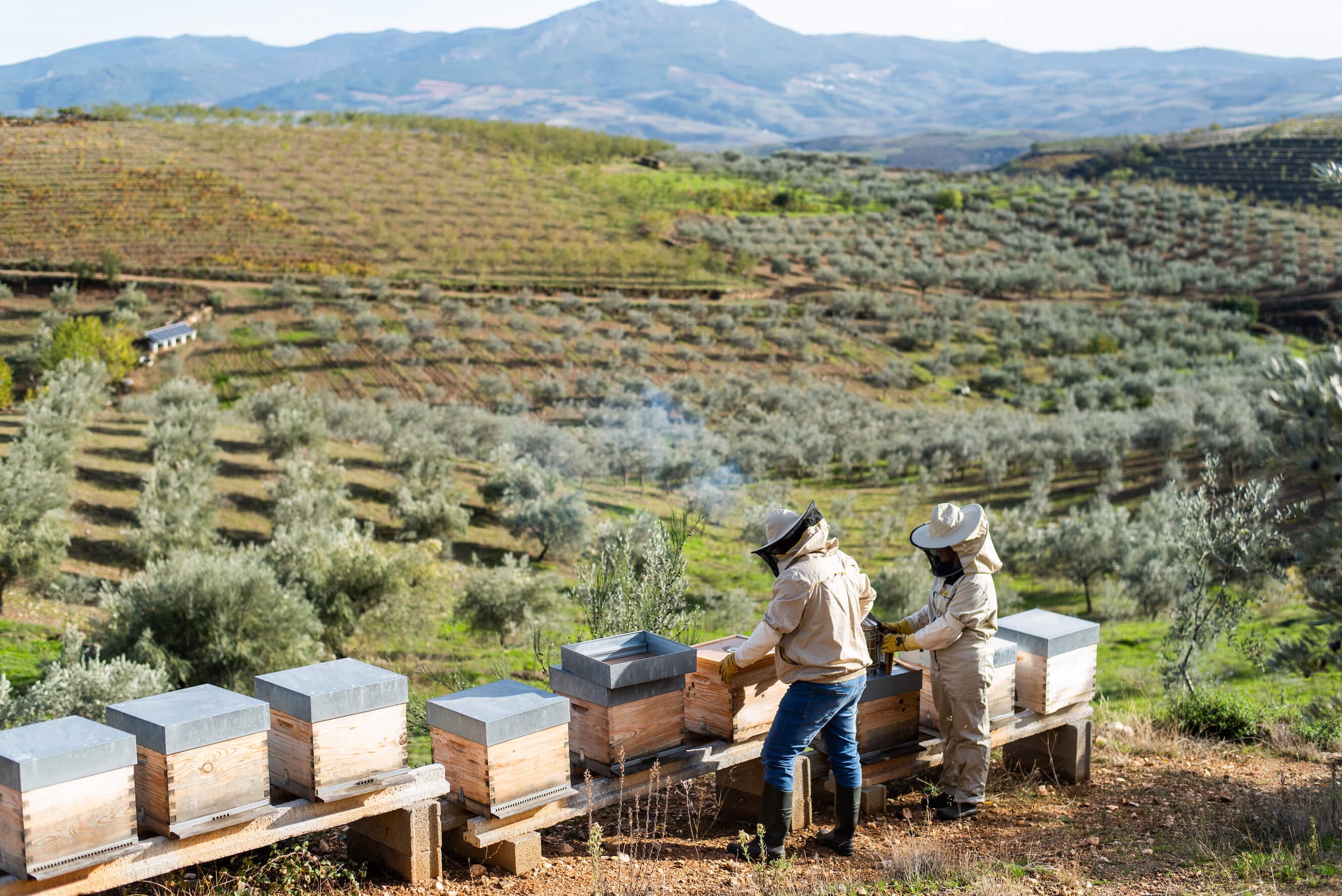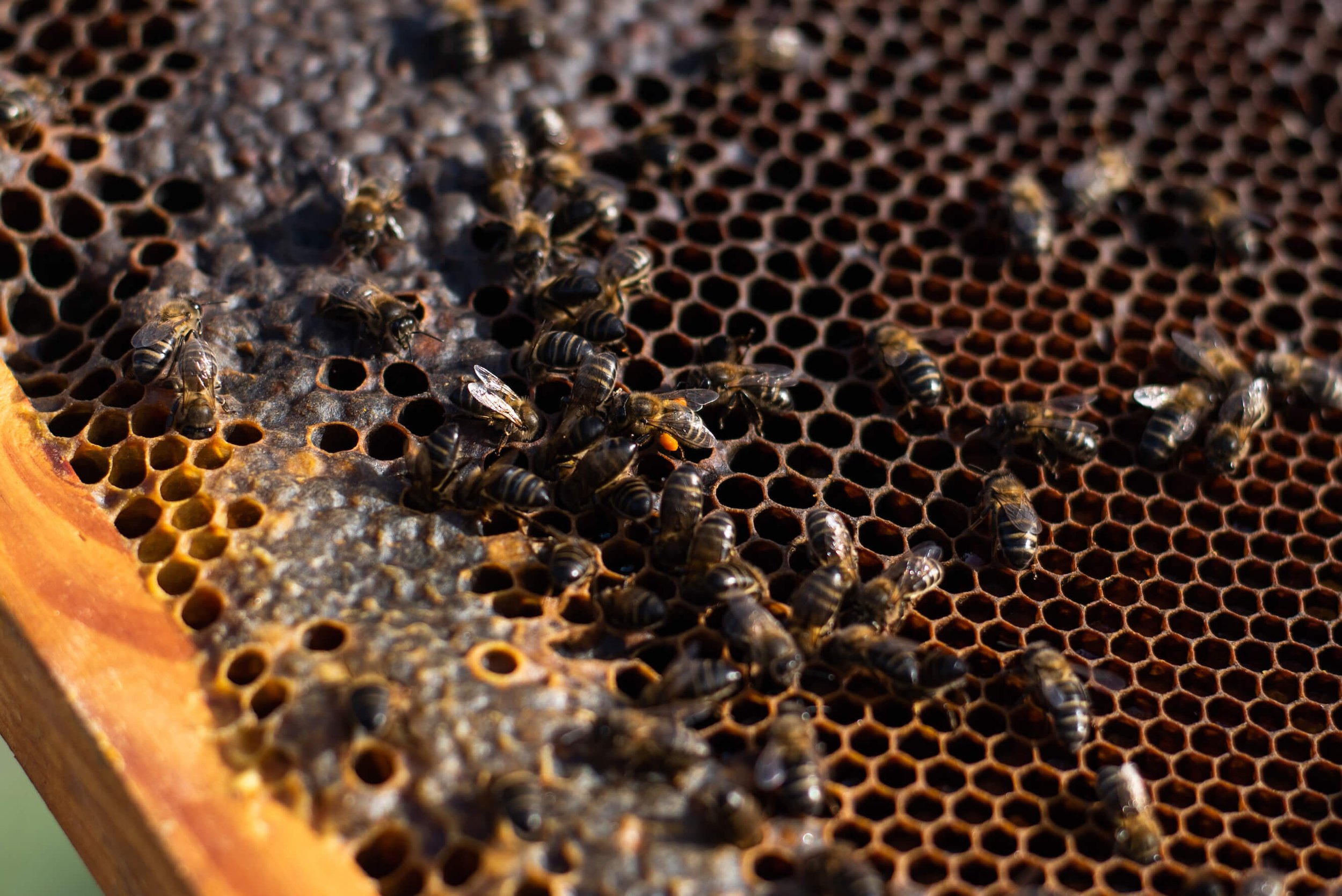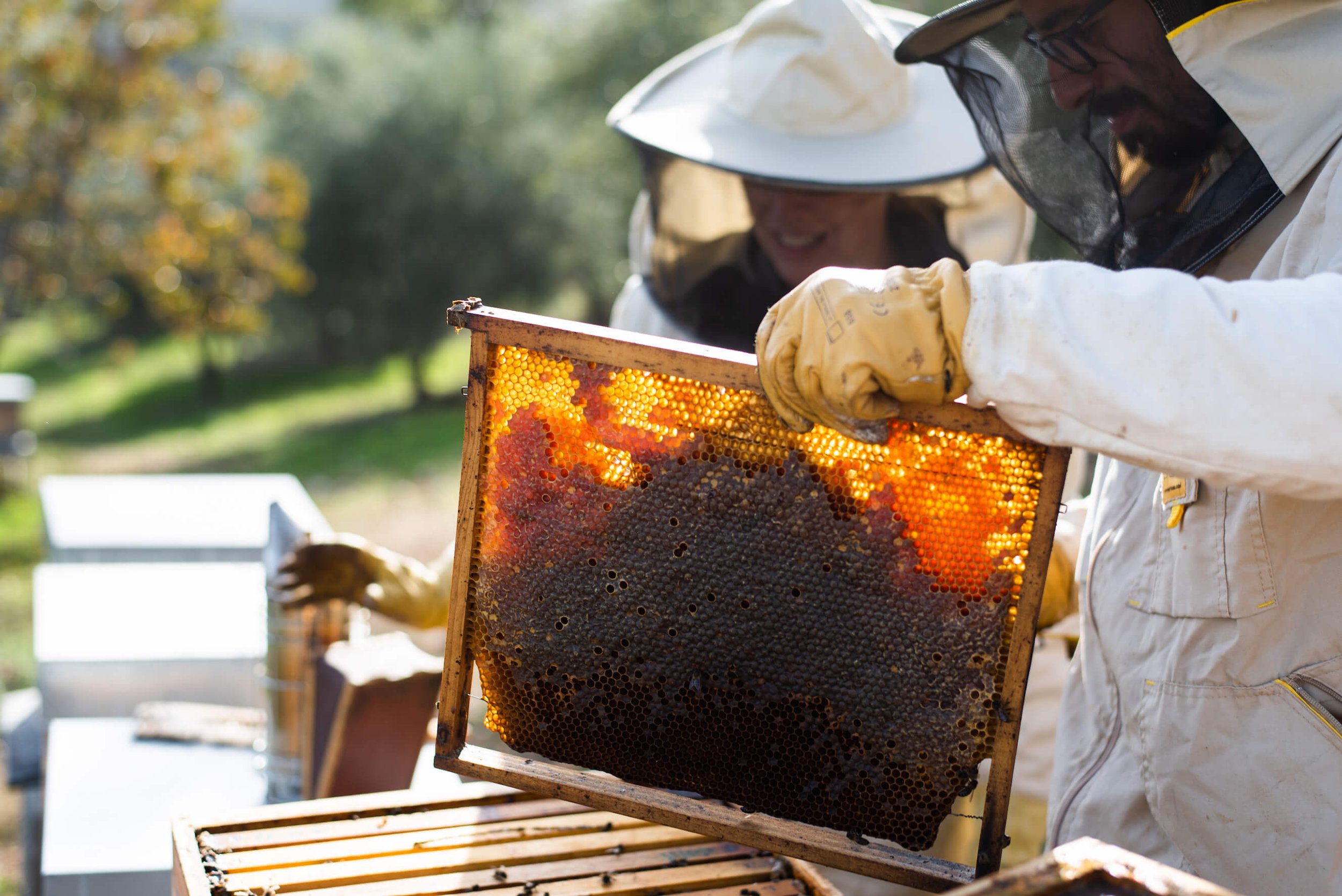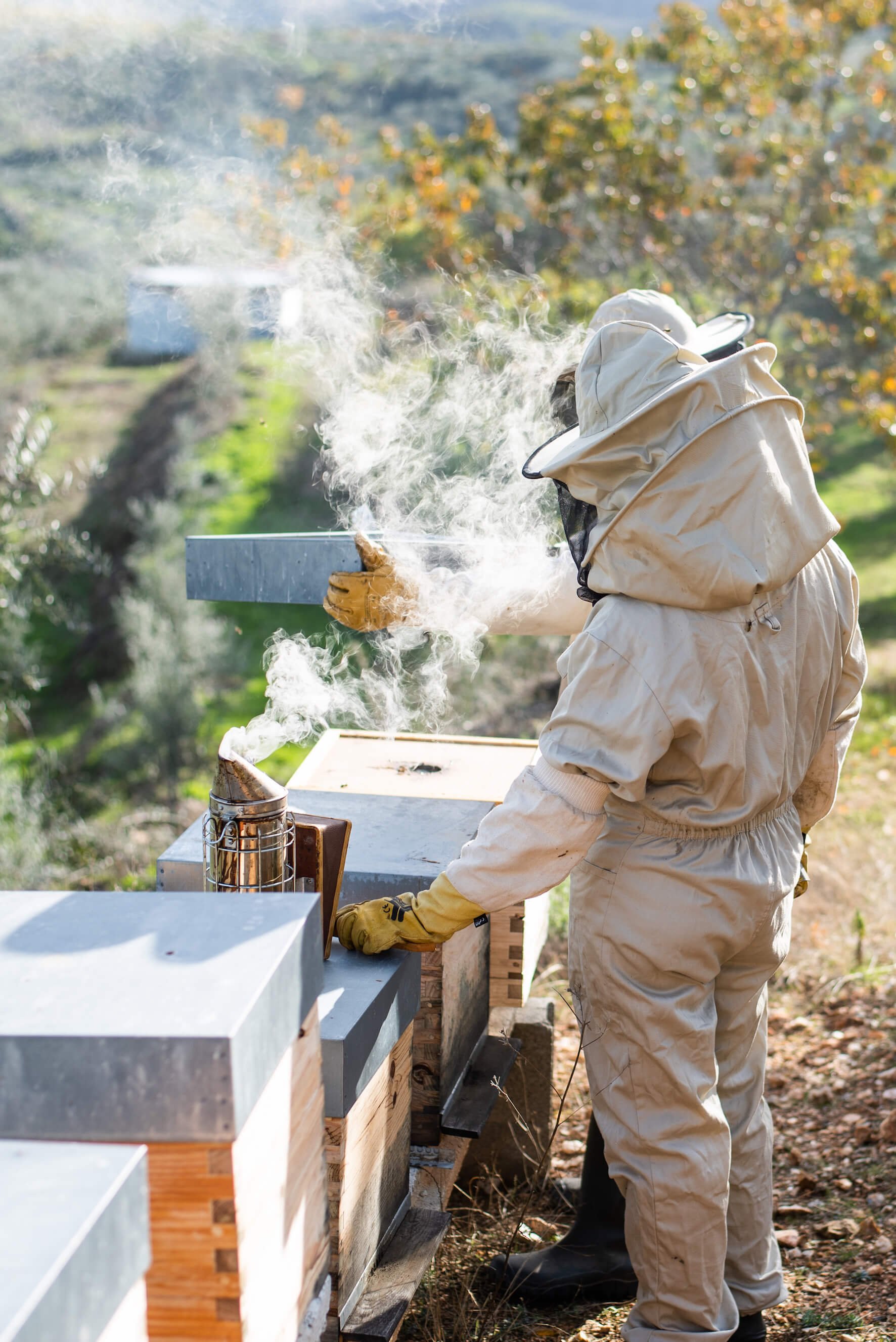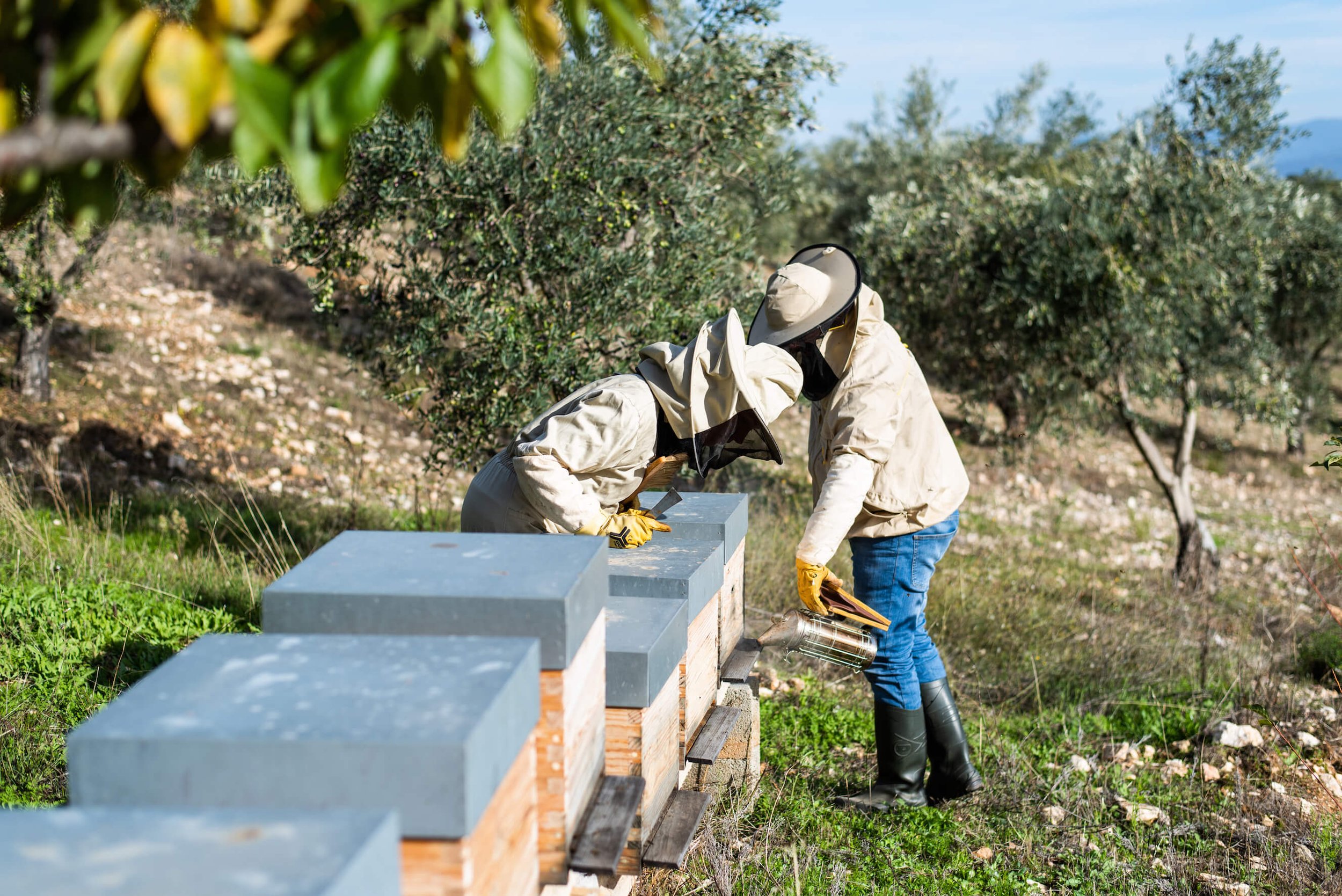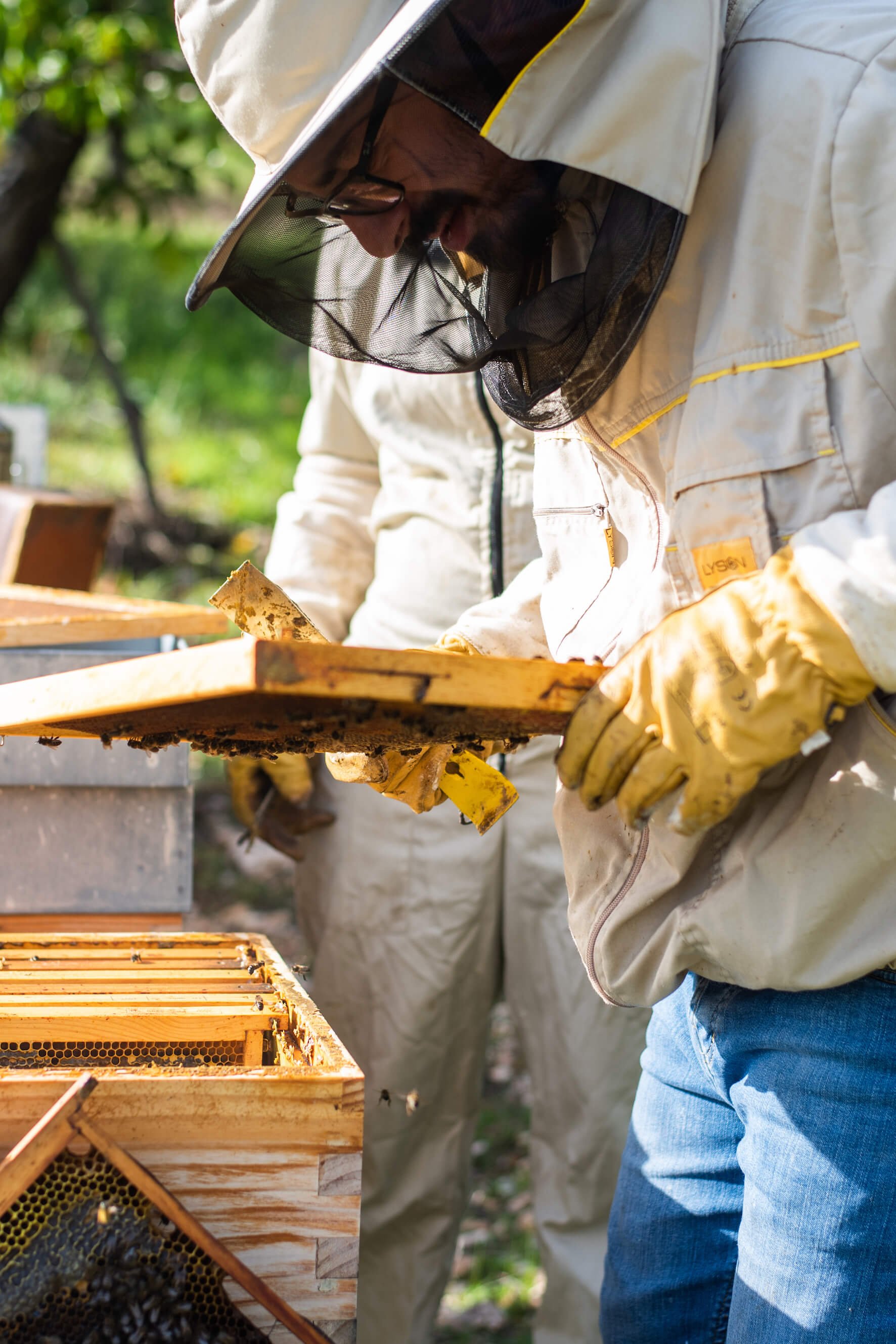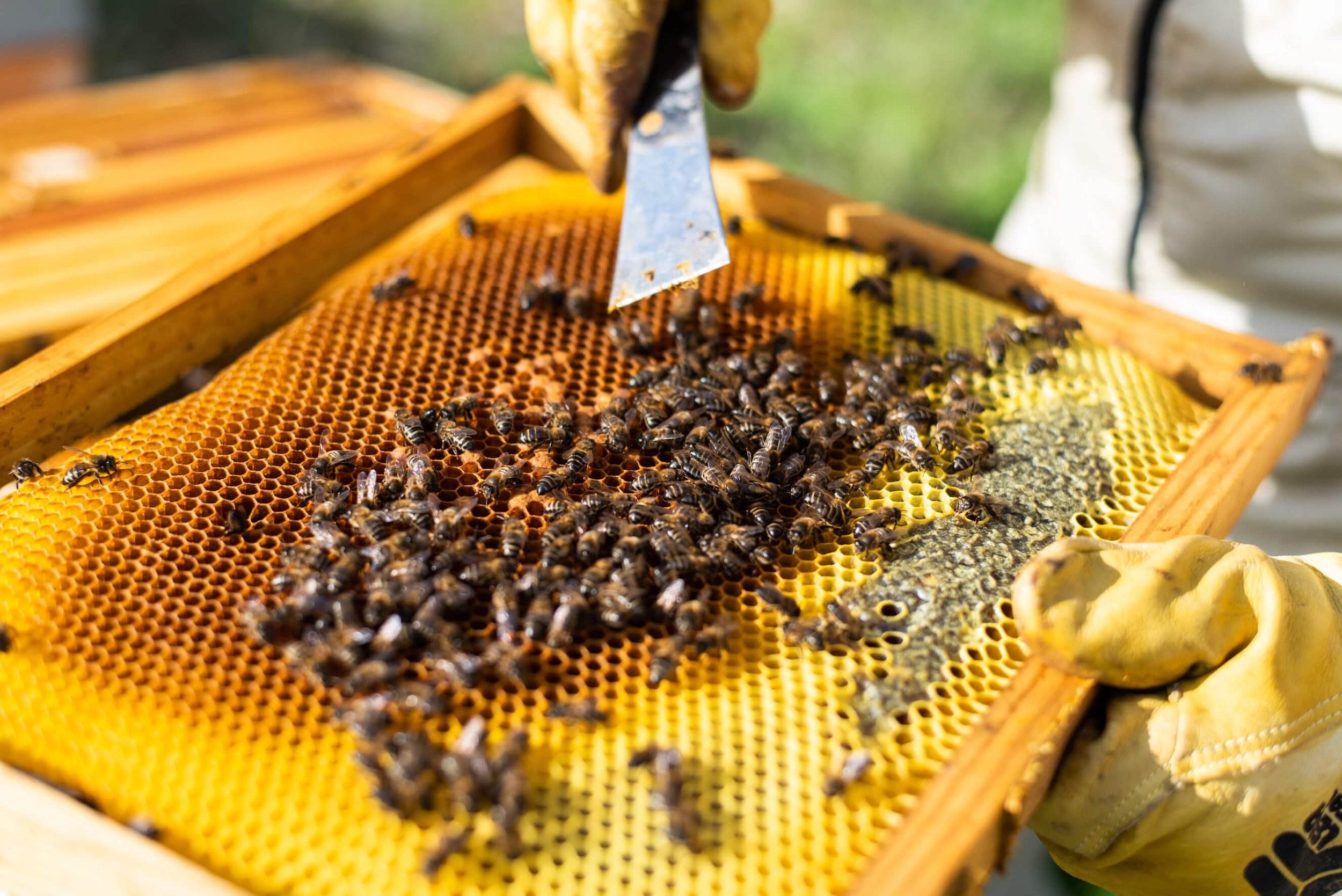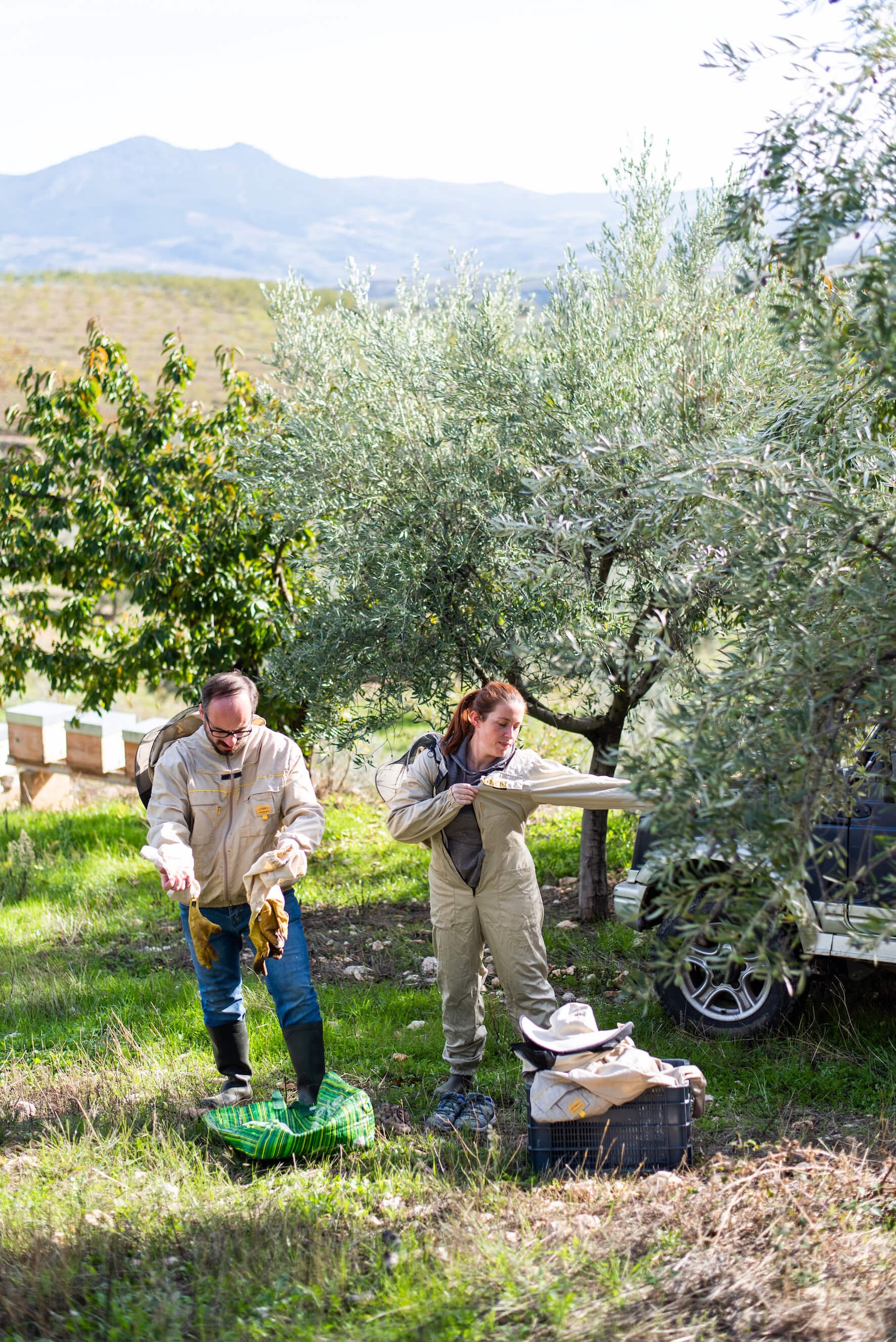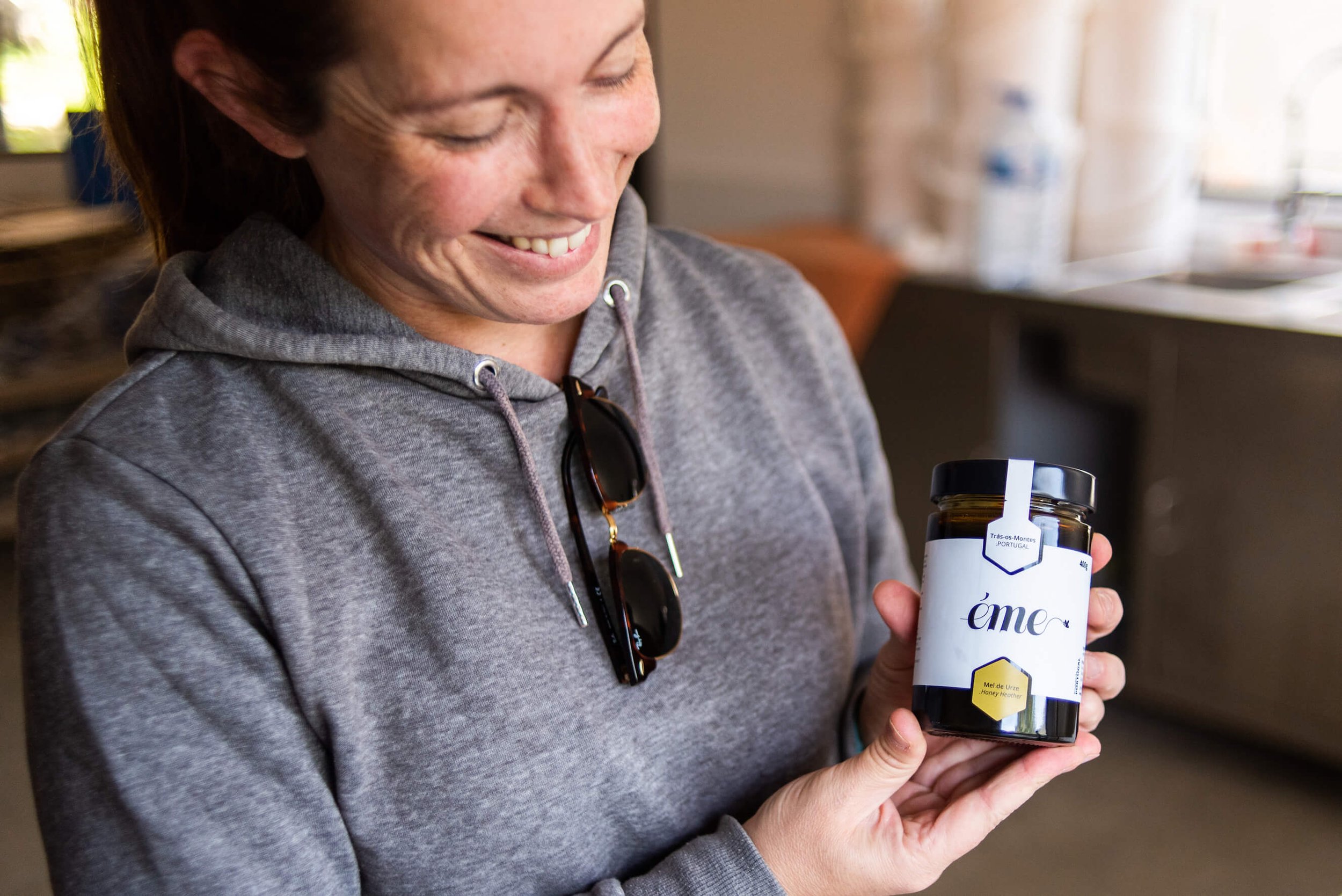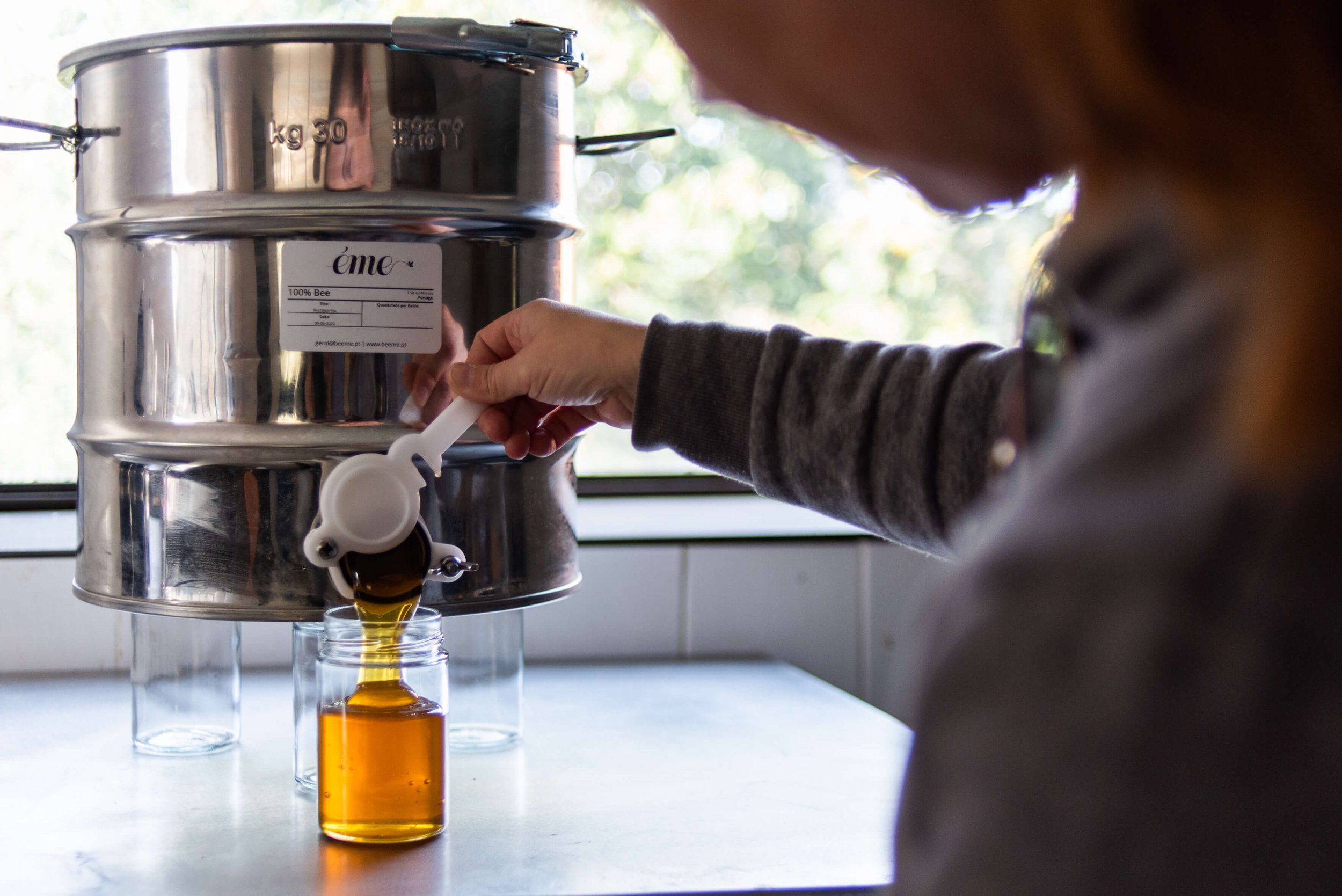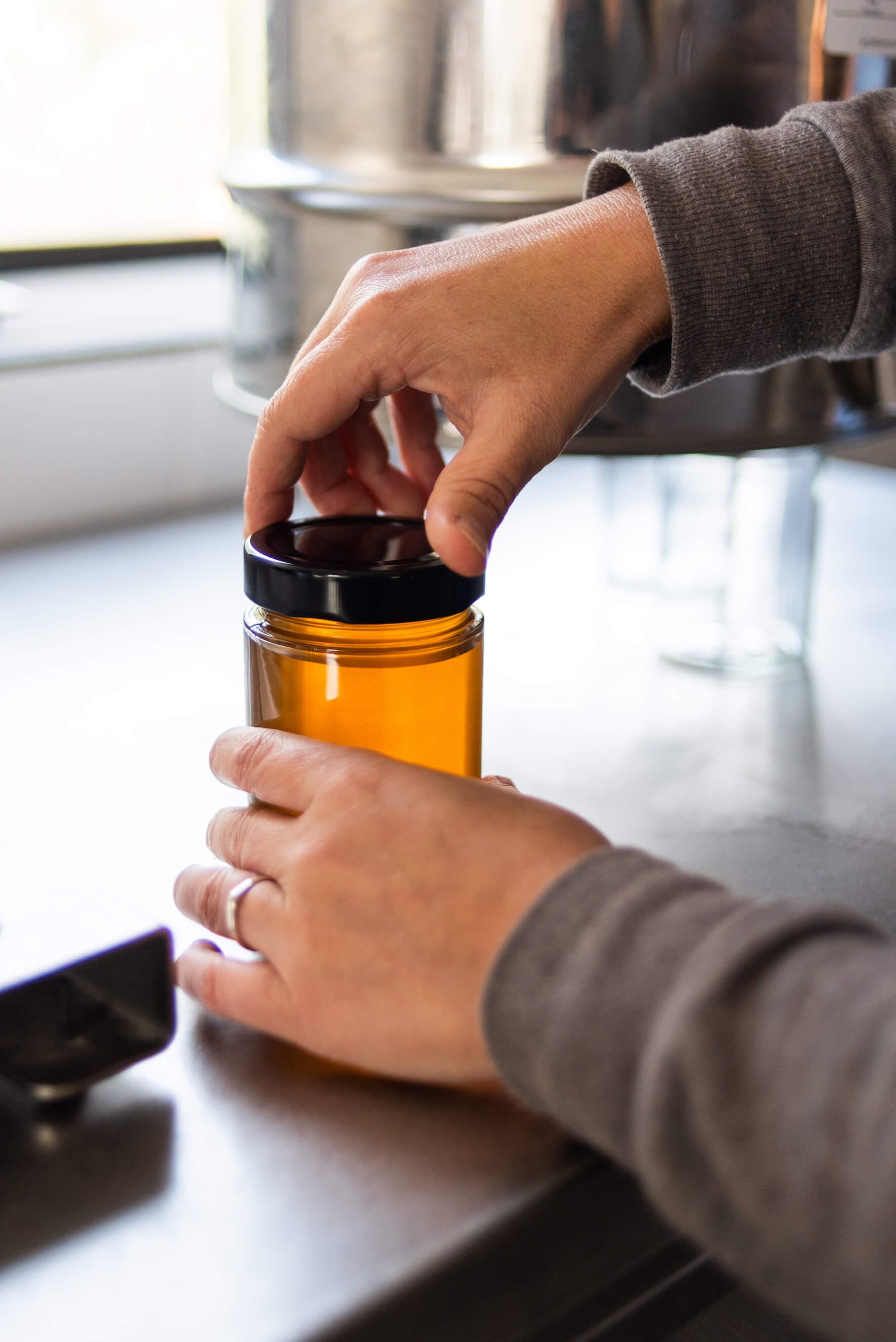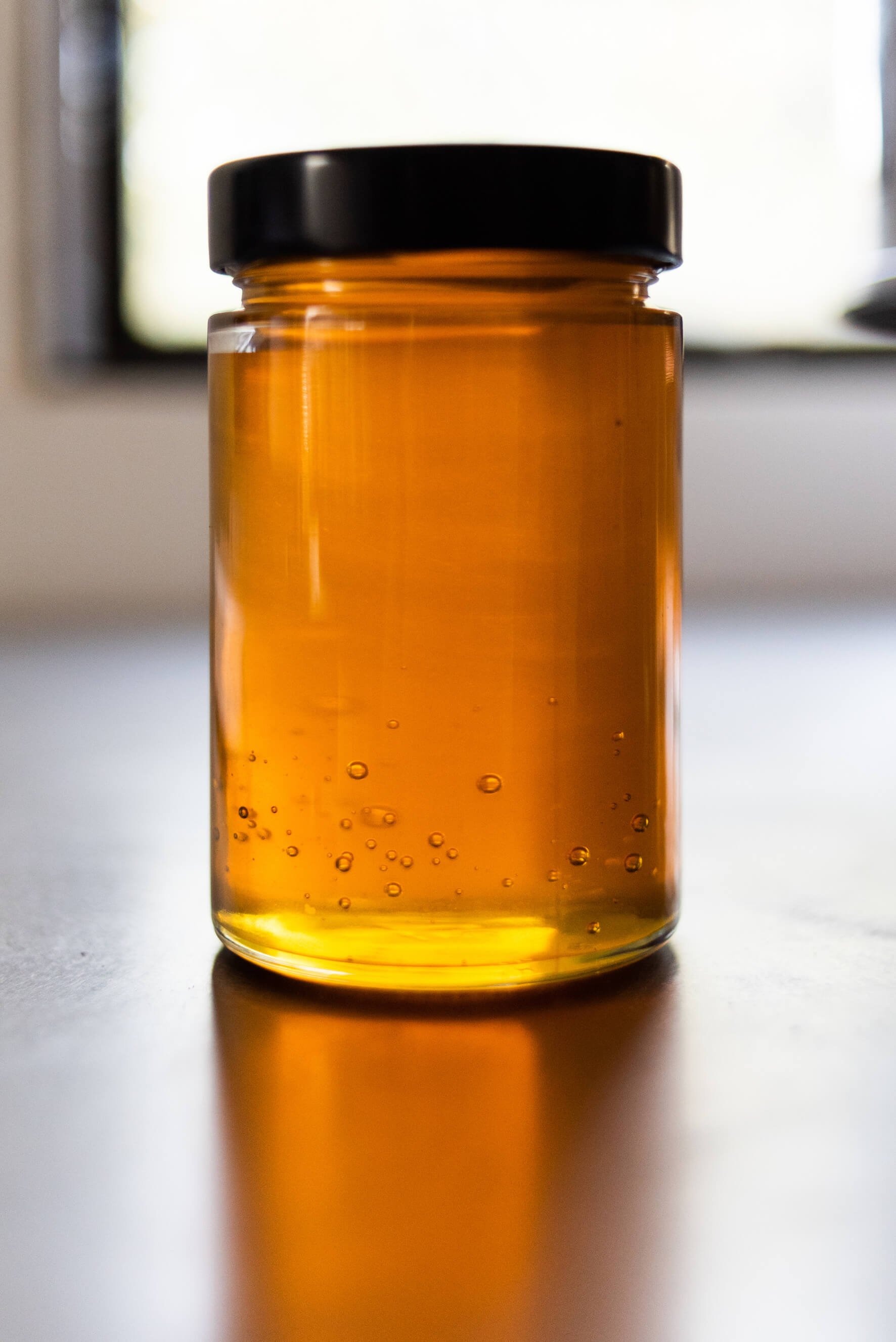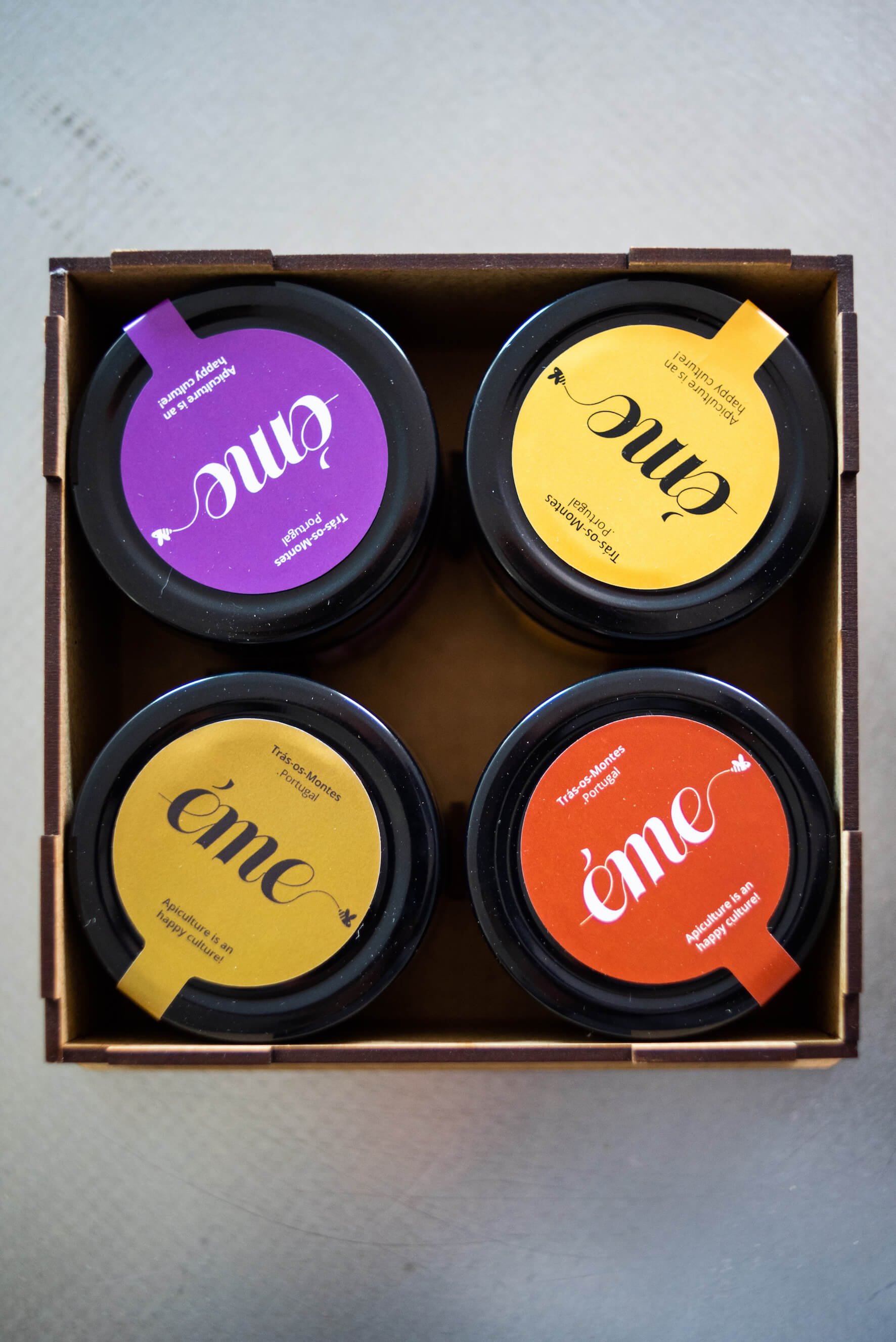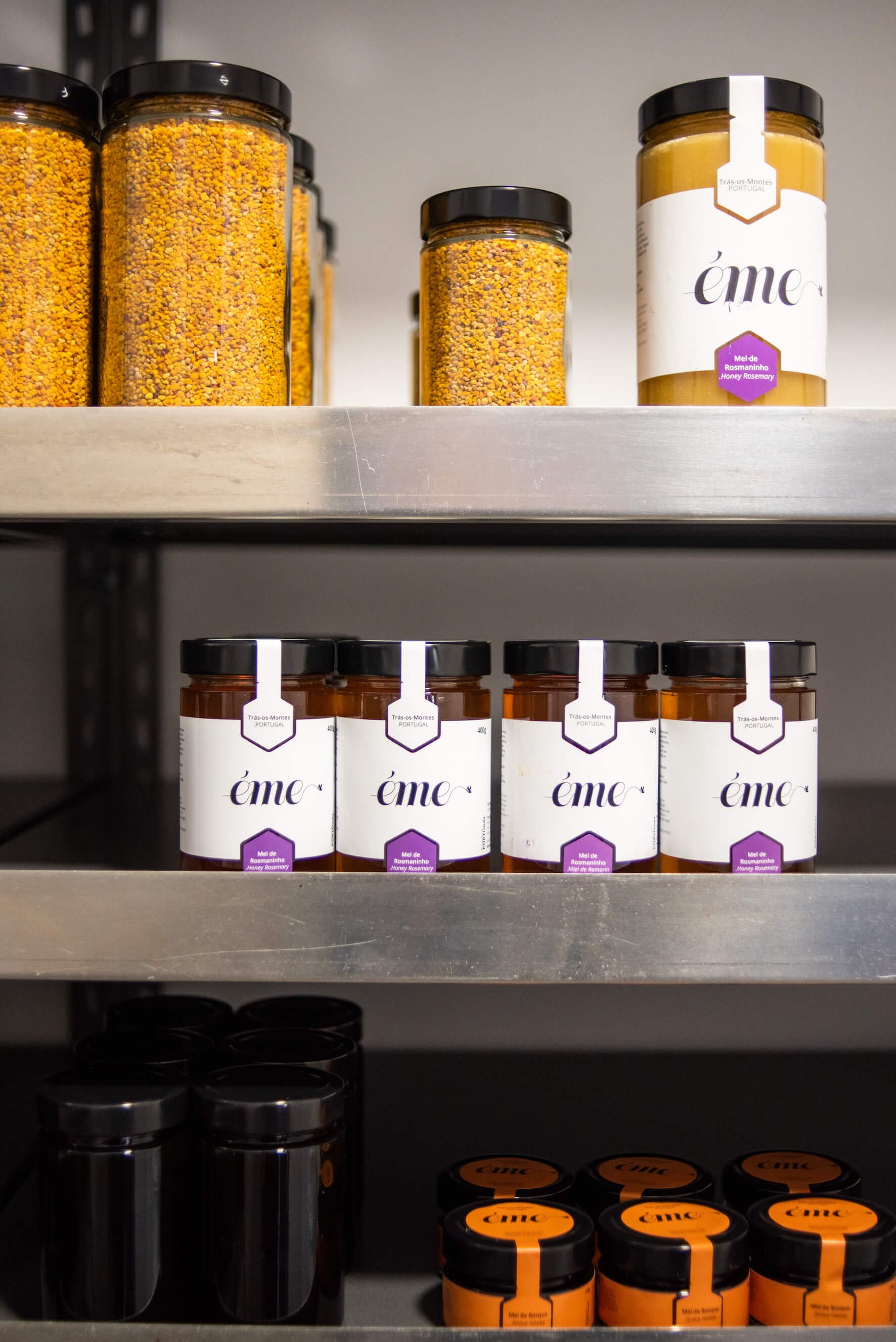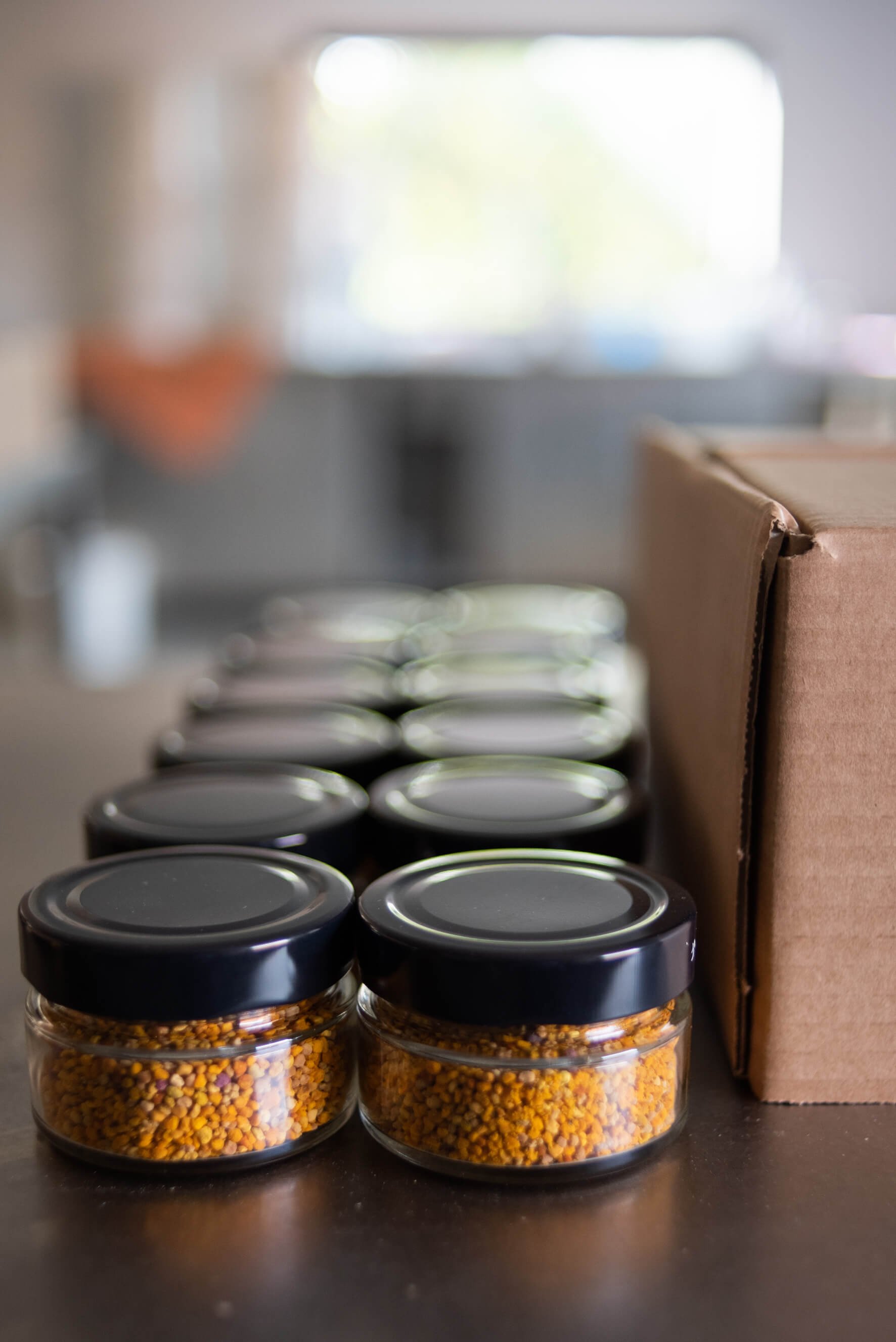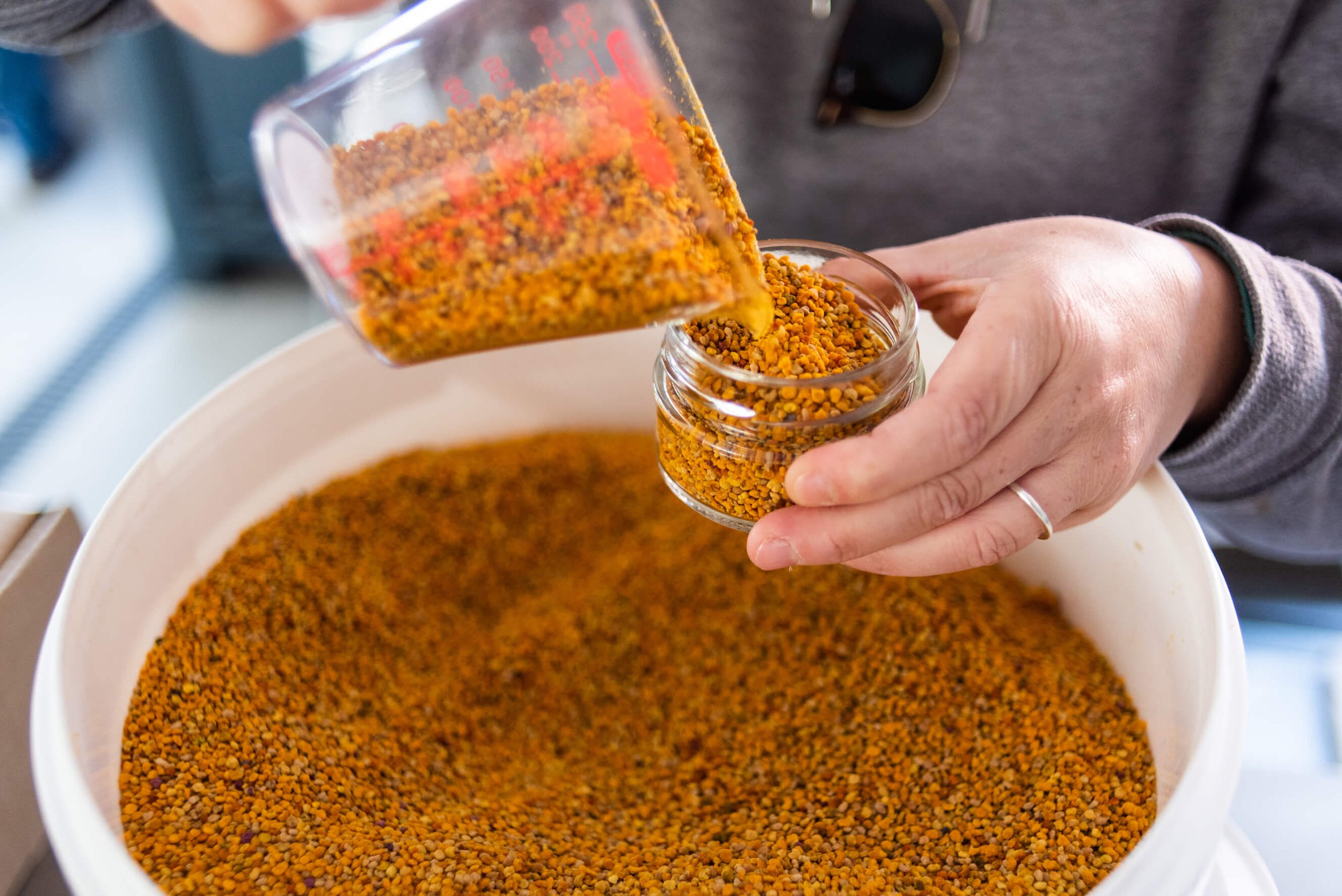beekeepers éme and their pollinator friends
“Our bees don’t live in prisons” - Éme beekeepers respecting the rhythms of our pollinator friends.
Marina’s parents are beekeepers. Sometimes she is asked how her parents produce honey, to which she responds ‘My parents don’t produce honey. The bees do.’
Marina and Nuno at Éme work alongside the bees’ seasonal rhythms to collect and share honey and pollen with fellow humans. On any given day, tens of thousands of apis mellifera bees travel several kilometres from one of their 150 hives placed among olive groves, chestnut trees, rosemary and heather.
Nuno’s passion for beekeeping began as a child when he caught a swarm of bees on a wall outside his grandmother’s house in Porto. Today, Marina and Nuno share land and a warehouse in Stª Maria de Émeres with the team behind Caixero olive oil, in northeast Portugal. It’s a rural place with few houses, the kind of place where everyone knows each other and helps out by sharing materials and food.
Marina kindly took time out of her bee-sy (sorry) schedule to share the highlights and challenges of her work as a beekeeper.
New Dawn Traders: What is one of your favourite times of year as a beekeeper?
Marina: One of my favourite times is when we divide a healthy beehive in two, which we don’t do more than once or twice a year because the bees don’t like to be bothered.
We get to see how well our hives are doing, and it’s beautiful. We have to look closely and pay attention to the details - if the hive has eggs, if it has larvae, if it has a queen bee. These things all show the progress the bees have made in the year.
It’s also one of the moments when we don’t want to be stung by the bees, as they get very nervous!
NDT: What has your experience of working with sail cargo been?
M: The entire concept of shipping our products by sail is for a better world and environment and for us, to fight for less pollution and a more sustainable world.
It’s better for the bees. Bees are the most important polliniser in the world. And as everybody knows if bees go extinct, we will go extinct too.
If we work all together, I think we can reach something better.
NDT: What can you tell us about the seasonal rhythm of the bees you work with?
M: As you can imagine, in the colder months between October and March, there is not a lot of flowering outside. So there is less nectar for the bees to collect.
The honey and the propolis the bees produce in the winter are for them, to ward off disease and to have energy to last the winter. In the winter the bees clean their ‘houses’ and do other things at home they don’t have time to do in the warmer months.
So we don’t collect honey in the winter. We have to respect this time of the bees, right? They’re living their normal lives, making honey, and we have to respect this.
NDT: What does it mean for honey to be ‘organic’ or ‘bio’?
M: I don’t agree much with ‘bio’ honey. Our bees don’t live in prison. Our own land is organic-certified, but the bees fly for several kilometres around and I can’t know what is next to our land.
That’s why we send honey samples from our hives to a lab experienced in honey analysis, where they check for any unwanted chemicals in the product.
The labs also analyse what percentage of which plants are in the honey samples so we can correctly label the products as chestnut honey or rosemary honey, for example.
NDT: How is your work affected by the changing climate?
M: We have a lot of wildfires. And certain vegetation isn’t growing at the right time any more. Some flowers disappear too quickly. It’s a challenge every day.
And there are other challenges like the arrival of Asian Wasps which are a threat to the native bees. And diseases for which we need to give medications.
NDT: You mentioned you want to make beekeeping ‘your way of life’ - what other work do you do on the side?
M: At the moment, being a beekeeper is not sufficient, financially. Nuno is also a designer. I work in a nursing home. We do many things at the same time. But we are here to surpass this together. Of course, we want to make beekeeping our way of life, but for this, we have to keep selling honey.
NDT: You’ve mentioned that winter is a good time for business - why?
M: People tend to think about honey just in the winter, when they have a sore throat, or when they are sick. So yes, winter is a very important time for our small business.
But we are trying to let people know that honey and other bee products are important all year round and that good honey is a superfood. It is good for skin exfoliation, stomach health, and even as an ‘energy shot’ for people who exercise!
NDT: Tell us about the recipe you’ve shared for rabanadas with honey sauce.
M: Rabanadas are similar to what you’d call French Toast. It is great for the winter months or for a Christmas dessert, and if you’re like my mom you could eat Rabanadas for breakfast, lunch and dinner! The sauce can be adapted - sometimes with port wine, orange juice, or cinnamon, and this variation is with our honey.
RECIPE: Rabanadas with honey sauce - a Portuguese delicacy
Note: the taste and sweetness of this dish may vary depending on the Eme honey you use.
Ingredients - bread
1 long loaf of day-old bread
750 ml milk
250 g sugar
the peel of 1 lemon
4 eggs, beaten
1.5 l of vegetable oil or olive oil
Ingredients - honey sauce
750 ml water
200 g sugar
the peel of 1 lemon
1 jar / 400 ml honey
Preparation - bread
cut the dry bread into diagonal slices, 1 finger thick
place the milk, sugar and lemon peel in a pan, stop the heat once boiling
soak the slices of bread in the mixture, drain and coat in a beaten egg
place the oil in a deep pan and heat until the oil is hot
place the soaked slices of bread in the hot oil and turn until both sides are golden
Preparation - honey sauce
place water, sugar and lemon peel in a pan and boil until the sauce thickens into a syrup
dip the golden slices of bread in the syrup, remove, and place on a serving plate
drizzle the bread slices with the remaining syrup
LEARN MORE…
Éme Instagram
Éme website
Photography: Kerry Murray
Words: Katrin Deeg
